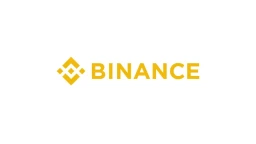Digital Rupee: India to have its own Digital Currency

The Reserve Bank of India is getting ready to start using its central bank digital currency (CBDC), which it classifies as money in the digital form of legal tender. It will be exchangeable at par with current currencies, accepted for payments, and regarded as a secure store of value. It is sometimes referred to as the “digital rupee.”
The RBI’s CBDC, is similar to the banknotes that are already in circulation and intended to provide users with more options for using money. It is solely planned to be used for digital transactions and to make it easier to use.
The accepted cryptocurrency by the RBI is the digital rupee, which has been repeatedly repudiated by the institution and described as a severe threat to the stability of the nation’s financial system.
Here is how the digital rupee and cryptocurrency will vary from one another. The CDBC is being hailed as being safer than private cryptocurrencies because it is an electronic version of a sovereign currency.
What is Cryptocurrency?
Simply said, cryptocurrency is unchained money that is not controlled by any central bank or government. It is supported by blockchain technology and secures user transactions with cryptography, making it hard to forge.
However, a hacker discovered a flaw in the Bitcoin protocol in August 2010. By carrying out several transactions and then entering them into the blockchain, the hacker took advantage of the flaw to create a limitless number of Bitcoins. In just a few hours, the user generated 184 billion Bitcoins, however his scheme was uncovered and the transactions were revoked. This has been the only danger to the Bitcoin network to date.
Bitcoin was developed with the intention of facilitating online money transfers. It is a digital currency, a different form of payment that is unrestricted and functions just like cash.
Blockchain, decentralization, and cryptography are the three terms you need to be familiar with in order to better understand cryptocurrencies.
The showrunner of cryptocurrency is the blockchain. It is a digital ledger that keeps track of transactions and distributes access to authorized users. The registered users each have access to the information. Therefore, everything that is recorded on the blockchain is transparent and unchangeable. This means that it cannot be altered or compromised. by the administrator not even.
In the case of cryptocurrencies, decentralization refers to the absence of any central authority over the asset. By using this approach, cryptocurrencies become independent. The RBI also oversees and controls the centralized money that we use.
In the context of cryptocurrencies, cryptography refers to secret writing, so the recipient can only read messages. It handles the transactions, safeguards operational independence, and strengthens the entire chain.
How is Digital Rupee different than Cryptocurrency?
Cryptocurrencies, like Bitcoin, are decentralized and not managed by any one country or organization. They are also not backed by any physical commodity. Digital Rupee, on the other hand, will be a centralized currency managed by the Reserve Bank of India (RBI) and will be backed by the Indian rupee.
Here are some key differences between Digital Rupee and cryptocurrency:
- Cryptocurrencies are decentralized while Digital Rupee will be centralized.
- Cryptocurrencies are not backed by any physical commodity while Digital Rupee will be backed by the Indian rupee.
- Cryptocurrencies are managed by their respective communities while Digital Rupee will be managed by the RBI.
How will Blockchain help in making the Digital Rupee robust?
The Central Bank of India is reportedly in the process of developing its own digital currency, which it believes will help make the country’s banking system more robust. One of the key advantages of a central bank digital currency (CBDC) is that it would be easier to track and monitor than traditional fiat currency. Blockchain technology would be used to help achieve this, as it would provide a secure and transparent way to store and manage the data associated with the CBDC. In addition, the use of blockchain could also help reduce the risk of fraud and other financial crimes.

How is CBDC supposed to affect the Indian Market from a tech perspective?
CBDC will help the spread of financial inclusion in India by providing a more accessible and affordable means of payment. From a tech perspective, CBDC is supposed to make it easier for people to transact with each other. This is without having to go through a third party such as a bank or an e-commerce platform. This would make it easier for small businesses and individual entrepreneurs to do business without the hassle of high transaction fees. Additionally, CBDC could help reduce fraudulent activities such as money laundering since transactions would be recorded on a blockchain.









